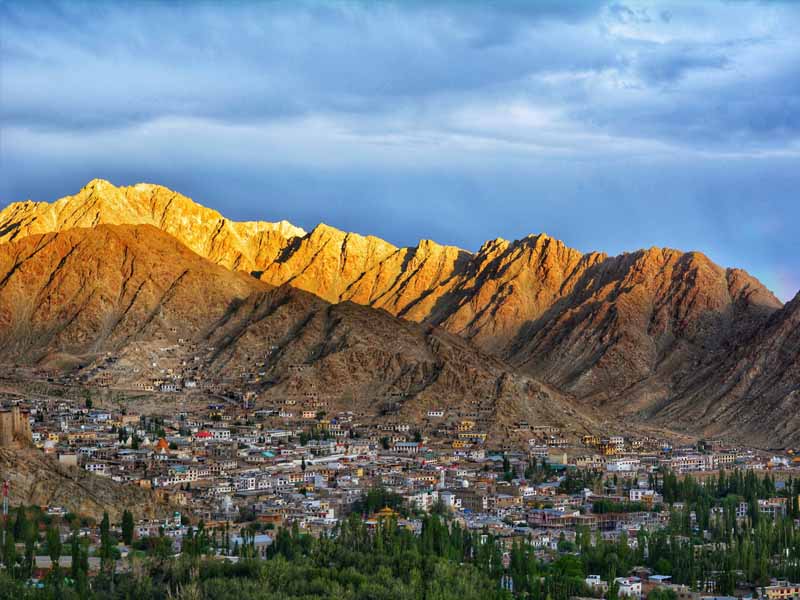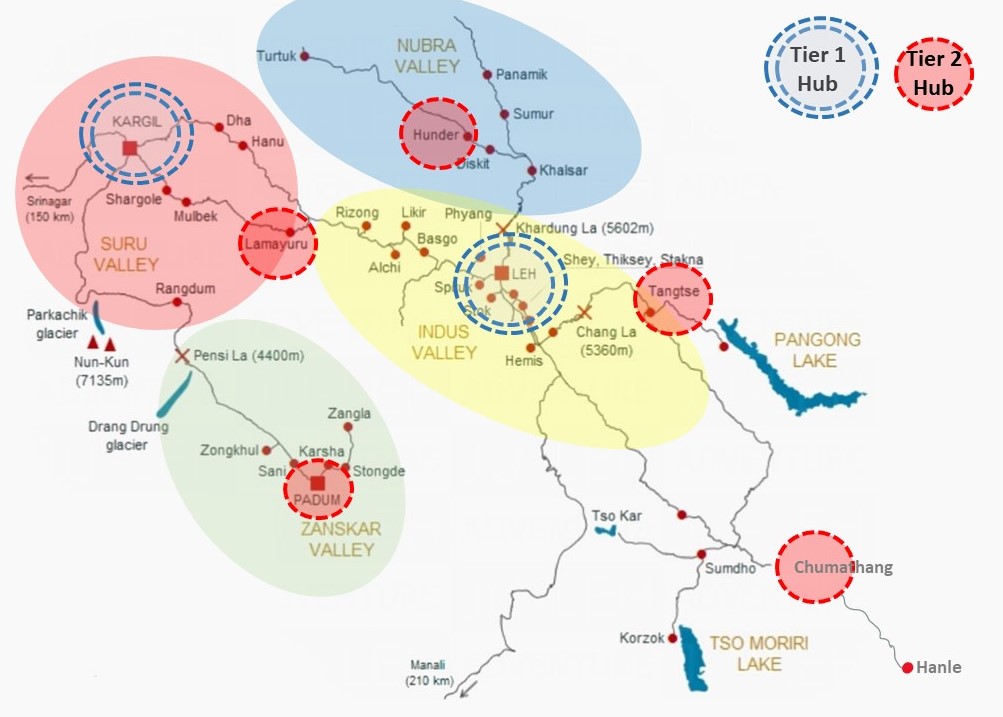


Case Study
Tourism Sector Transformation in Ladakh
Ladakh – the trans-Himalayan cold desert region at the cross-roads of the Silk route, has represented an amalgamation of cultures evolved from its history of thousands of years since the Aryan civilization. This sparsely populated high-altitude region has a fragile ecosystem characterized by vivid landscapes and barren or snow-capped peaks. Despite being the point of origin of perennial rivers, scanty rainfall, frozen rivers in winters, low vegetation and vast rugged terrain collectively accentuate water scarcity.

Opening up this border region for tourism has resulted in exponential growth of both domestic and foreign tourist arrivals, concentrated in a 2-3 month peak season. The delicate ecosystem is under threat from over-tourism on one hand, while on the other hand tourism sector is a critical economic sector for livelihoods in a region which otherwise provides limited opportunities.
A multi-lateral bank supported Government of India with expertise from Destinopedia’s experts to develop a comprehensive strategy and investment plan for development of sustainable tourism in the region. Reimagining tourism in Ladakh to realize the opportunity of making it a world-class destination requires a comprehensive set of strategies to elevate the tourism product and experience, and drive sustainability measures before mass-tourism leaves behind any long-term scars.
Ladakh – a destination with ~16% annual domestic tourist volume growth and 50% contribution to its’ GDP (pre-Covid) requires a well-crafted transition strategy. Product development around the theme of Buddhist tourism in all its’ manifestations (religious practice, built and cultural heritage, festivals, food, art, crafts et al) requires curation to elevate the experience. Similar approaches were outlined for other products in adventure, wellness, eco-tourism and heritage to offer a bouquet of experiences overcoming limitations of weather, fitness and endurance levels, and interests.
Framing regulations and enabling enforcement; together with setting graded standards of service delivery and adopting them are important elements of this framework. A refocus on select tourist segments coupled with Demand-Side Management measures help in sustainable growth of the visitor economy at the destination. The transition road-map charted a pathway for quadrupling the tourism driven economy over 5 years, while limiting arrivals to a 10% increase per year. Elements of comprehensive branding, communication and marketing campaigns were outlined. Digitalizing tourism operations and experiences in Ladakh, capacity building of both public and private sector players, partnerships with civil society and travel trade are amongst the proposed interventions.


Institutional framework reforms through constituting regional Destination Development Councils in each of the four sub-regions, viz. Leh, Kargil, Zanskar and Nubra are recommended. Drawing inspiration from destinations like New South Wales, Australia; innovative approaches are adopted in defining the membership and governance, collaborative yet independent roles and funding models.
Tourism Infrastructure investment programs framed by Destinopedia’s experts included – (a) connectivity and transportation: way-side amenities, road accident and recovery services, SOS emergency communication facilities, heliports; (b) destination infrastructure: municipal infrastructure augmentation in the Tier 1 and 2 destinations (with a view to disperse hospitality capacity) and basic infrastructure upgrades at tourist hotspots / visitation sites.
Thematic interventions include specific investments at monasteries and gompas to support Buddhist, wellness and heritage tourism; facilities and arenas for adventure, endurance sports and popular sports such as archery and ice-hockey, heli-medevac facilities; and facilities to support eco-tourism such as caravan parks, camping sites, trekking trails, digital aids and interpretation.
Two unique hospitality sector competitive grant-loan blended funding programs are proposed for guest facilities upgrade and green infrastructure development at properties. To support DDCs take the destination development agenda forward, two competitive grant mechanisms are proposed for – tourism product and curated experiences development and destination marketing initiatives.
A multi-pronged capacity building program for enabling the Tourism Department, regional Tourism Development Authorities and Destination Development Councils, academic and training institutions and skill development of practicing MSMEs as an essential component of the transformation program, further supplemented with a comprehensive Technical Assistance component shall ensure success of the overall program.
In sum, through a comprehensive approach experts’ of Destinopedia charted the path to grow Ladakh’s tourism sector to an INR 2000 crore industry over 5 years, with an investment that offers returns on all dimensions - financial, economic, environmental and societal.
